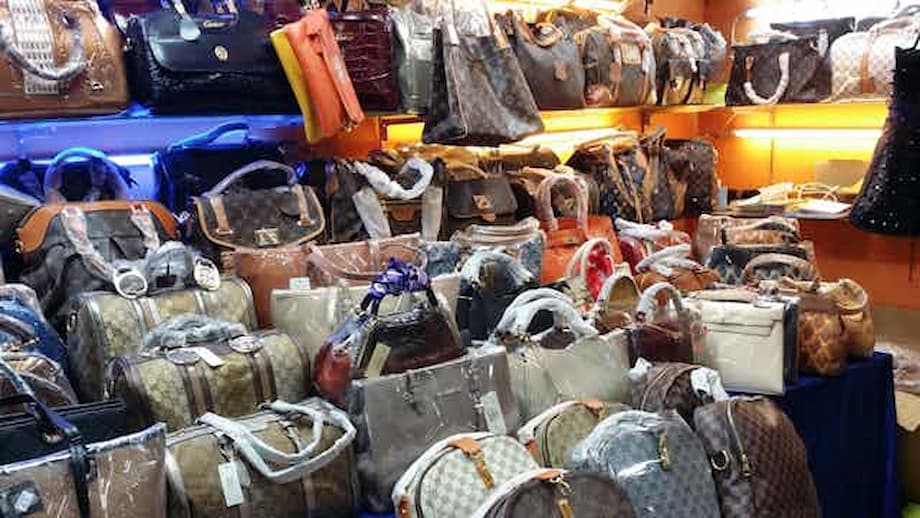Inside the TikTok surge for factory direct luxury bag claims
In April 2025, millions of TikTok views coalesced around a striking pitch. Creators claiming to represent Chinese factories said they make the same handbags sold by Hermès, Louis Vuitton, Chanel and other luxury houses. They urged viewers, primarily Americans, to buy direct from China on platforms such as DHGate and Taobao. The timing was pointed. The United States had just announced tariff hikes on Chinese imports at rates of 145 percent, and creators framed their content as a workaround that could save consumers money.
- Inside the TikTok surge for factory direct luxury bag claims
- Where luxury bags are actually produced
- Counterfeit, dupe or something else
- The law and the risks for buyers
- Health, safety and ethics
- Why this is happening now
- Social media mechanics and the scale of the counterfeit market
- How to shop smarter without getting burned
- Key Points
The videos featured factory floors, workers at sewing machines, price breakdowns for leather and hardware, and confident claims that luxury brands quietly rely on Chinese manufacturing. Some touted $50 versions of iconic bags or $10 versions of popular clogs. Others offered Google Sheets and QR codes that linked to supposed suppliers. Many clips were later removed for violating TikTok rules against marketing counterfeit goods, yet their message and methods spread quickly through reposts and new accounts.
The United States remains a cornerstone market for global luxury. Leather goods alone generated more than $79 billion in sales in 2023, powered by investment bags such as Chanel’s Timeless, Louis Vuitton’s Neverfull and Hermès Birkin and Kelly models. Chinese demand has cooled from its pandemic boom, so attention has shifted to American shoppers. The viral content made bold claims about where European brands produce and how items get labeled made in Italy or made in France. Evidence from brand disclosures and European labeling rules paints a very different picture.
Where luxury bags are actually produced
Luxury houses publicize workshop locations because they are part of the brand story. Hermès states that its bags are made in France, and Louis Vuitton lists workshops in France and several other European countries as well as in the United States. Investigations and brand reports reviewed by newsrooms and researchers indicate no production of those flagship bags in China. While components such as zippers, adhesives, linings or hardware can come from multiple countries, the final assembly that determines origin typically takes place in Europe or the United States for the top luxury models.
European labeling requires a product’s last substantial transformation to occur in the country named on its label. A strap cut in one country and attached in another is not enough. The main assembly process must happen where the label says it did. Some premium and accessible fashion brands do manufacture certain categories or steps in China, but the most coveted luxury handbags from houses such as Hermès and Louis Vuitton are produced largely in Europe and the United States.
What about OEM factories
Many TikTok clips claim to reveal original equipment manufacturers, or OEMs, that allegedly make for luxury labels. OEMs do exist in fashion. They produce to strict specifications, under confidentiality, and cannot legally sell identical goods on the side. If a factory sells products it claims are the same as a luxury brand’s, it would breach contract terms and infringe on intellectual property. In practice, these claims often point to unauthorized replicas or counterfeits rather than legitimate surplus.
Margaret Bishop, a global textile and apparel industry consultant, explained why the OEM pitch is flawed.
Any contracts they have with their supply chain would specifically ban the factory selling direct to anyone, with or without a logo, with or without finishing.
Even when a brand discloses its tier one suppliers, that does not grant those factories the right to sell brand identical products to the public. If an item looks the same and uses the brand’s protected design or logo, it is either an unauthorized copy or a counterfeit. Either version creates legal risk for buyers and sellers.
Counterfeit, dupe or something else
Not all copycat products are the same. The vocabulary matters because laws and risks vary.
Counterfeit
A counterfeit uses a brand’s trademarks or logos without permission. That includes the monogram canvas of a Louis Vuitton bag or the name and lock hardware distinctive to a Hermès Birkin. Counterfeits are illegal to make, sell or import in most countries. Customs authorities can seize them, and courts can penalize buyers and sellers.
Dupe
A dupe mimics the look of a product but avoids the brand’s name or logo. Some dupes still infringe design rights or trade dress if the overall appearance is confusingly similar. Others are legal lookalikes. Many TikTok sellers call their goods dupes while quietly implying that they are made on the same lines as the originals. This blurs the line for consumers and can still lead to seizures if customs believes the item violates intellectual property.
Superfake or real fake
Analysts of China’s counterfeit industry describe a class of very high quality replicas. These superfakes use similar leathers, hardware and stitching to create near lookalikes. They are still counterfeit if they copy protected marks or distinctive designs. Their rise has made authentication harder and has increased consumer losses when fakes pass for genuine goods in secondhand markets.
Chinese and Hong Kong shippers continue to dominate global seizures by value. U.S. Customs and Border Protection data show that in 2024 nearly 90 percent of the value of counterfeit and pirated goods seized at U.S. borders originated from China and Hong Kong. That aligns with decades of manufacturing scale and a large ecosystem of suppliers who can source materials and parts at speed.
The law and the risks for buyers
Counterfeit trade accounted for about 467 billion dollars in 2021, according to intergovernmental estimates, with clothing, footwear and leather goods among the hardest hit categories. In 2023, U.S. authorities seized roughly 1.8 billion dollars worth of fake goods at ports and mail facilities. Mail order parcels and small packages are a major channel for seizures.
Importing counterfeits is illegal even for personal use. Seized items are typically destroyed. Buyers can face civil penalties and lose the money paid to overseas sellers. Claims in TikTok videos about avoiding tariffs by declaring items as gifts or personal goods do not change the law. Duties and taxes may still apply, and false declarations can trigger additional penalties. Shipping companies and customs have tightened scrutiny on high value direct to consumer parcels from China, and the United States has debated changes to the de minimis exemption for shipments valued under 800 dollars, which would narrow a common entry route for cheap imports.
Penalties can be severe in Europe. In France, buying counterfeits can carry fines up to twice the price of the genuine product and up to three years in prison. Other jurisdictions impose fines and allow authorities to seize and destroy goods at the border. The risk is not theoretical. Customs agencies conduct targeted operations for small parcels and track packages linked to known sellers and addresses.
- Customs can intercept a package and send a seizure notice. The goods are destroyed.
- Buyers may owe penalties or fees and have their details noted for future inspections.
- Refunds from offshore sellers are rare and chargebacks are not guaranteed.
- Repeat activity can expose buyers to higher scrutiny and potential legal action.
Health, safety and ethics
Even when a replica looks convincing, buyers do not know what is inside. Leather tanning can involve chromium salts, and metal hardware can contain toxic elements if quality controls are ignored. Adhesives and dyes can release volatile compounds. Branded products are subject to testing and audits. Factories making fakes operate outside those guardrails.
Vidyuth Srinivasan, chief executive of authentication company Entrupy, has tested thousands of replicas and warned about what they contain.
You are buying something that you think is cheaper and better, and it is a big F.U. to some of the brands, but you do not realize that you are actually harming yourself.
Independent reporting has found harmful substances in a significant share of counterfeits tested, including traces of arsenic or lead. Labor conditions are also unknown. Major brands publish supplier codes, conduct audits and face public pressure on human rights. Sellers of counterfeits often mask their operations, shift production sites and may not meet minimum wage or safety standards. A cheap price can hide real costs borne by workers, the environment and the buyer who receives an unsafe product.
Why this is happening now
Trade tension between the United States and China has escalated, and the 145 percent tariff announcement in April 2025 created real anxiety about prices. Some Chinese manufacturers and agents say orders have been canceled and margins are under pressure. TikTok offers a direct link to U.S. consumers, so factory owners and intermediaries have tried to reach shoppers at scale with a promise to cut out retail markups. Stories in U.S. and European media found spikes in downloads for Chinese shopping apps as these videos went viral.
Creators appeal to American viewers in English and use prices in dollars. They tell shoppers that they can buy from the same lines as top brands or get an unbranded version of the same bag. They sometimes reference shipping tricks or the de minimis threshold. Logistics providers have adjusted to policy shifts, and industry consultants point out that some carriers limited shipments for high value parcels from China to the United States. Even if the product price seems low, buyers still face duties, brokerage fees and the risk of seizure.
There is also a geopolitical undertone. Some reporting suggested the lax spread of these videos may serve as a soft response to U.S. tariffs. Other analysts note that China’s official stance opposes counterfeiting and that authorities have introduced stricter e commerce laws and platform liability over the past decade. Whatever the intent, the effect is clear. Viral content has blurred the line between real and fake for many viewers and has added pressure on the European luxury sector at a sensitive time.
Social media mechanics and the scale of the counterfeit market
TikTok rewards content that sparks surprise or controversy. A claim that 80 percent of luxury bags are made in China travels faster than a nuanced explanation of supply chains. Influencers and factory accounts benefit from views and follow growth. Some receive commissions from marketplaces by driving traffic. Even when platforms remove posts that promote illegal goods, new accounts and reposts keep the trend alive.
China’s counterfeit industry is vast and adaptable. Since the late 1970s, the country’s manufacturing growth created dense networks of component makers and workshops. That scale can be directed toward imitation as easily as original production. Government policy has added penalties for platforms that tolerate fakes, and big marketplaces such as Taobao and Pinduoduo have formed anti counterfeiting alliances, invested in artificial intelligence screening and offered refunds for verified fake claims. Counterfeiters adapt in response. They redirect buyers off platform, use coded language and change brand spellings to dodge filters.
A domestic twist is the rise of authentication apps like Dewu in China, which combine expert review with machine learning to verify goods and penalize fraud. The popularity of these services shows how much fear of being scammed has grown, even among shoppers who live near the factories featured on TikTok. Authentication is becoming a necessary step in secondhand markets, though even experts can be fooled by top tier replicas.
How to shop smarter without getting burned
High prices and viral videos can tempt anyone. A few simple checks can reduce the risk of ending up with a fake or losing money to a seller you cannot reach.
- Buy from brand boutiques, official websites or authorized retailers. If in doubt, use a brand’s store locator.
- Be wary of factory direct claims. Legitimate suppliers are bound by confidentiality and cannot sell the same product on the side.
- Check the price. A new bag offered at a fraction of the list price signals very high risk.
- Avoid paying off platform. Scammers move you to private messages to bypass marketplace protections.
- Look at return and warranty policies. Real retailers publish clear policies and stand behind products.
- If you buy pre owned, use trusted resellers that provide documented authentication and buyer protection.
- Remember customs rules. Declaring an item a gift does not make a counterfeit legal to import.
Key Points
- Viral TikTok videos claim Chinese factories make luxury bags for top brands and urge Americans to buy direct as U.S. tariffs rise.
- Brand disclosures and European labeling rules show that flagships from Hermès and Louis Vuitton are made mainly in Europe and in the United States, not in China.
- Most products shown in the videos are counterfeits or unauthorized replicas, not legitimate OEM goods.
- Counterfeit trade was valued at about 467 billion dollars in 2021, and U.S. seizures totaled 1.8 billion dollars in 2023.
- Importing counterfeits is illegal. Buyers risk seizures, penalties and loss of funds. In France, penalties can include fines up to twice the value of the genuine item and prison time.
- Health and safety risks are real. Tests of replicas have found harmful chemicals, and labor conditions are unknown.
- Chinese platforms have stepped up anti counterfeit measures, yet sellers adapt by moving off platform and using coded language.
- Buying from authorized channels and trusted resellers is the safest route. Factory direct claims for luxury bags are a red flag.




